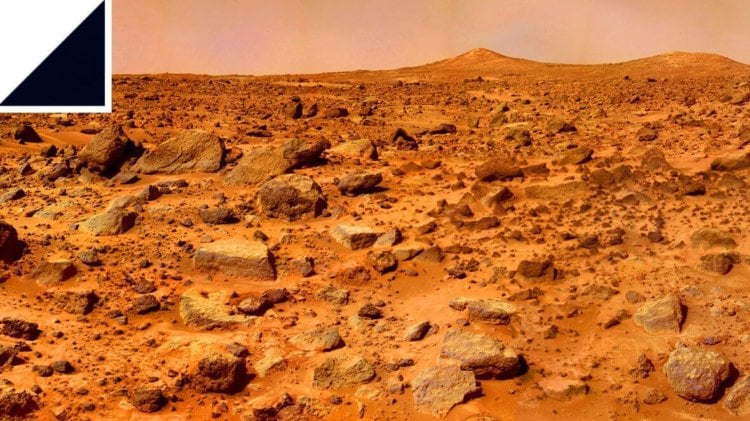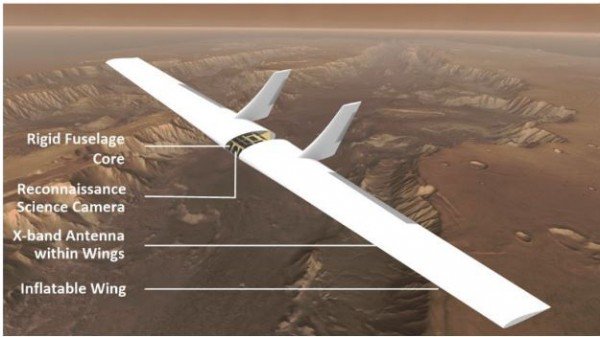Over the past few decades Mars has become the most studied planet in the Solar system (after Earth). He took dozens of visitors. Eight missions are currently working on the red planet. The oldest of them arrived in 2001, the Orbiter Mars Odyssey, it will last until 2025. More is planned of missions, from NASA and other space agencies to return samples from the Martian surface to Earth and, eventually, to send to people.

What will happen after “opportunity”? Most likely, the inflatable device using thermal updrafts, which can stay in the air. It will allow cost-effective mapping is not defined portions of the surface of the planet, which will help in planning the landing missions.
Glider for Mars exploration
New missions will require detailed maps of the surface. Rovers enable you to make these cards, but passing only a few meters per day. The NASA Rover opportunity has driven an impressive 45 kilometers during its mission, but it took almost 15 years.
Therefore, planetary scientists are looking for ways to explore the planet’s surface more quickly. One option is to start the plane in the atmosphere of Mars with an engine that can support it in the air. Such a mission will be able to cover great distances, but will cost expensive — from $ 350 million.
A cheaper approach would be to send a mission more. Thus, another idea is to send a Rover to a drone, which will be able to explore the surrounding area. But such flights would be limited and short.
What is needed is transportation, which will be small enough so that it can be used to perform another mission and thus to overcome long distances.
The other day Adrian Buskila, Aman Chandra and colleagues from the University of Arizona said that he had developed just such a mission. Their idea is to launch the glider without power in the atmosphere of Mars and maintain it on the fly using thermal updrafts — rising columns of warm air. The glider is inflatable and can fit into a fairly small volume, so that it can be carried as payload performing more serious missions on Mars.
But first a little background. The spacecraft, which is currently in orbit around Mars capable of capturing images with a resolution of 30 centimeters per pixel. Planetary scientists gradually put together the map of the surface of Mars in high resolution.
However, they need more high-quality images to plan future landing missions. To date, the majority of the devices were landed on the relatively flat plains, where the probability of a collision with a boulder or a crater was small. These areas tend to be less interesting from a scientific point of view. Instead, the planetary geologists would like to visit the valleys and ridges formed by water. Safe landing in such areas will require devices visualization of accurate representation of small rocks and craters that can damage the machine by contact.
Planting modules provide this level of detail because they can take pictures with a resolution of 1 centimeter per pixel in the 100-meter area around him. But they are unable to travel great distances required to reach the interesting regions. That’s why scientists have turned their attention to flying machines.

Flight on Mars is complicated. Although gravity is low, only one third of the earth, the Earth’s atmosphere a hundred times denser. The craving to create is very difficult.
The new wings of the glider should be large relative to its weight. The glider will carry a 5 megapixel camera, radio communication, onboard computer, some solar panels with batteries to store energy during the day and stay the night. Buskila and colleagues calculated that, in addition to inflatable wings and rudder, the glider will carry 5 kilograms is the mass of the eagle.
They then calculated that in order to keep the mass afloat, the wings will need a swing of about 6 meters, and the machine can fly at a speed of 100 meters per second. For comparison, the eagles on the Ground can plan with a wingspan of 2 meters with a flight speed of 15 meters per second.
The glider will be deployed during the main mission to enter the Martian atmosphere and disconnected from the main load at the altitude of about 2 kilometers. Nitrogen generator inflate and create pressure in the glider in less than 10 seconds, and its wings will become hard in about an hour, under the influence of Martian sunlight.
Inflatable technologies like these have already been tested on Mars. As the module Mars Pathfinder and Mars Rovers the MER relied on air bags that inflated as we descend in the atmosphere, and then softened the impact with the ground. They were also developed for small satellites.
An important part of the mission will be an Autonomous ability to use updrafts in the Martian atmosphere. Such systems on the Ground have demonstrated the ability to stay afloat for weeks or months.
If Mars is the profile of the wind, like the earth, i.e. the change in speed and altitude of the wind, then the earth approaches work on the red planet. Scientists have carried out numerical simulation of these types of operations on Mars.
These results suggest that Autonomous flight will be able to keep the glider afloat for long periods of time, provided a sufficiently large change speed and altitude of the wind. The only question is, will the airframe survive on Mars for a year.
However, even a few hours of flight can generate valuable data. Camera on Board will have to possess a surface resolution of 10 centimeters, and the speed of 100 meters per second glider can fly many hundreds of kilometers. It sends image to the space station like the Mars Reconnaissance Orbiter, which will then send them home.
Such a mission could shed light on several long-standing mysteries of Mars. One of these — mysterious lines on the slopes of Mars, which occur due to global warming and the onset of summer. It is believed to be streams of salt water, but needed better monitoring.
The glider could also identify potential landing site for future missions. Thanks to the speed of surface exploration, he could at an accelerated pace mapping.
What’s missing from the team of engineers, so this is Hollywood taste. The most successful missions have always been ones that produce the most iconic painting. Neil Armstrong standing beside the American flag on the lunar surface, or stellar traveler Elon musk driving a Tesla, which flies away from Earth. This kind of image play an important role in public perception.
Glider need a wide-angle camera on the tail, which will send the images to the Ground. What do you think, worth it? Tell us in our chat in Telegram.